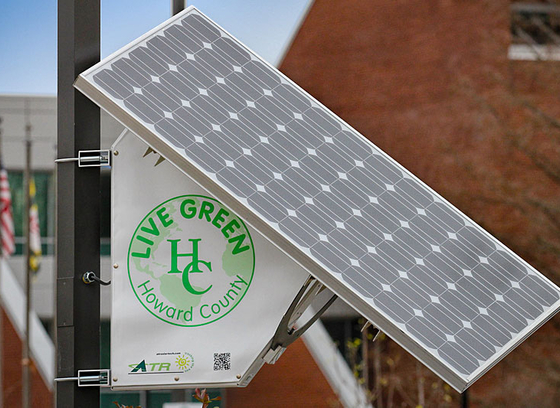America’s greenest county is raising the bar on its own sustainability goals.
 On the heels of earning the first LEED Platinum certification in the country under the U.S. Green Building Council’s version 4.1 States and Communities Program, Howard County Executive Calvin Ball launched new initiatives in October to dramatically lower greenhouse gas (GHG) emissions and improve other sustainability measures.
On the heels of earning the first LEED Platinum certification in the country under the U.S. Green Building Council’s version 4.1 States and Communities Program, Howard County Executive Calvin Ball launched new initiatives in October to dramatically lower greenhouse gas (GHG) emissions and improve other sustainability measures.
In his State of the County address, Ball announced that Howard County will work to cut its total GHG emissions by 60 percent by 2030 and achieve net zero emissions by 2045 through a combination of reduced emissions and increased carbon storage. The 2022 Climate Action Plan also requires the county to increase its resiliency against more severe storms, achieve energy independence and implement sustainability measures equitably across all communities. Ball also signed an executive order establishing a Climate Action Subcabinet to ensure that implementation of the plan is a priority for every county agency.
“It is important that climate action is not seen as something that is the responsibility of only one sector of the community or only one department within government,” the executive order states. “To truly tackle the challenges of climate change, all of us in Howard County – government, schools, businesses, nonprofit partners and residents – must work together to reduce harmful emissions.”
Initiatives by Howard County, which earned its LEED Platinum certification, could help the county find ways to further lower its carbon footprint, Ball said. Under his administration, Howard County has converted all 10,000 streetlights to high-efficiency LEDs, expanded its electric vehicle infrastructure to provide more than 100 publicly accessible charging stations, adopted the strongest forest conservation law in the state, planted more than 64,000 trees and signed the largest solar power purchase agreement in Maryland history to meet roughly half the county government’s electricity needs.
Those initiatives, he added, addressed one of the biggest challenges to making the county more sustainable, namely “helping people understand how practical the applications are and how sustainability is actually done. Otherwise, it can feel a little nebulous to think about sustainability.”
Such initiatives can also support economic growth in the county, Ball said.
“I think there is a synergy between sustainability and economic development. On the practical level, sustainable structures are more energy efficient, more energy independent so they save money in the long run,” he said. “On the philosophical level, you see a lot of workers during The Great Resignation looking more at the social capital of businesses and how seriously those businesses take their duty to protect our environment. A business that is a better corporate citizen will draw the workers of the future… Redeveloping properties, for example along the Route 1 corridor, in a more environmentally friendly way could make the area more attractive and generate more economic development.”
An initiative by Howard County Economic Development and Johns Hopkins’ Applied Physics Laboratory to create a smart city concept in the Columbia Gateway Innovation District could also deliver new examples of highly sustainable infrastructure in the coming years, he said.
“Being the first LEED Platinum community in the nation is not only an honor, but it is a responsibility,” Ball said. “We have to continue to build upon our work and continue to aspire to be leaders in sustainability.”